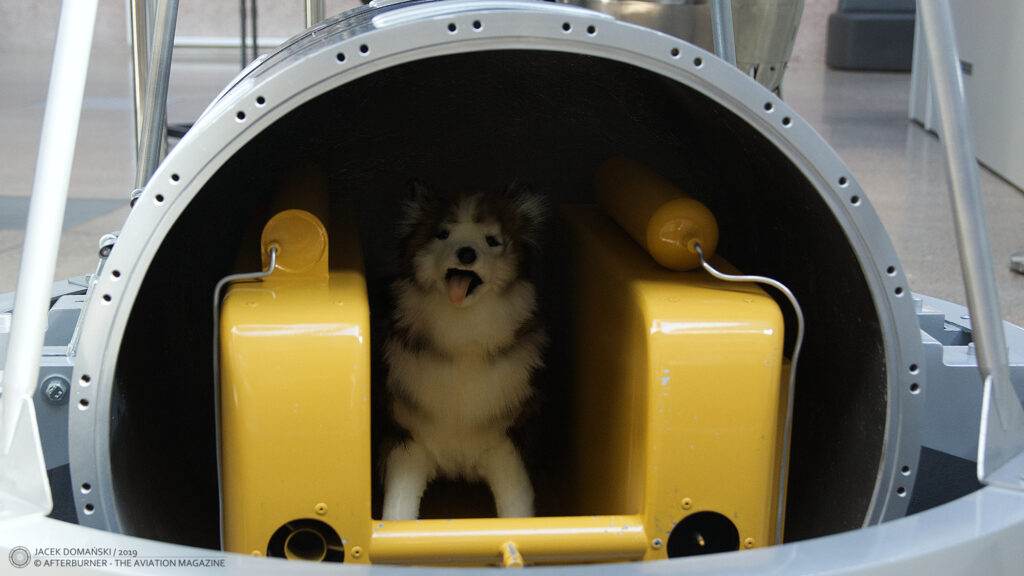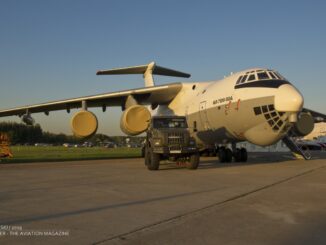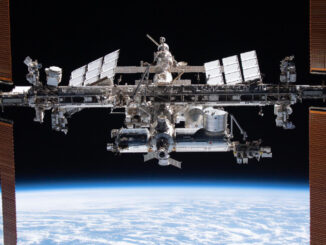 On 14th April 1958, the Sputnik 2 – the second spacecraft that was launched into the orbit – re-entered the Earth´s atmosphere after spending 162 days in space and encircling our planet 2570 times.
On 14th April 1958, the Sputnik 2 – the second spacecraft that was launched into the orbit – re-entered the Earth´s atmosphere after spending 162 days in space and encircling our planet 2570 times.
The Sputnik 2 was launched on 3rd November 1957 and meant another milestone in space exploration. It was the first spacecraft to carry an animal into the Earth´s orbit – a space dog named Laika (Лайка).
Launching the second spacecraft by the Soviet Union was a huge surprise for the entire world. Barely a month ago, Sputnik 1 – Earth´s first artificial satellite – was successfully launched by the USSR and caused so-called Sputnik crisis in the USA. It seemed that the Soviets´ space exploration programme was very advanced and the country was so ahead of the USA.
Actually, the Sputnik 1 and 2 programmes were officially approved by the Soviet authorities at the same time, yet in January 1957. Sergei Korolev, the chief Soviet rocket scientist and godfather of the Sputnik programme, called the two first artificial satellites Простейший Спутник. The first word of that term – ´prosteishiy´, can be translated into English as elementary or simple, while ´sputnik´ means both satellite and fellow traveller in Russian.
The idea behind the programme was to get a spacecraft into orbit before the United States. Nevertheless, the main Russian satellite, later known as Sputnik 3, suffered development delays. In order to keep with the initial schedule, Korolev proposed to launch two much simpler satellites that would allow the Soviet Union to be the first in space and then proceed with Sputnik 3 construction with less much pressure.
At that time, almost nothing was known about impact of spaceflight on living creatures. Therefore, test flights with animals on board seemed to be the only way to get some experience before sending the first human into space.
An interesting fact is that the Soviet space dogs were stray ones from Moscow area. Laika was chosen from three dogs proposed for that mission, as she was considered the calmest of them. The other two were Albina, with role of the backup dog, and Mushka, used as ´control dog´ to test equipment and to compare data received from space. Inside the Sputnik 2, Laika was put into a small capsule allowing her to lie down or stand. It was expected she survive up to ten days and the satellite was equipped with corresponding amount of oxygen and high-nutrition gel food. Nevertheless, it was never considered the Sputnik 2 and the dog return to Earth.

Although preparations to send the first living animal to Earth´s orbit lasted about one year, it was still a short time and the Soviet scientist worked under excessive pressure to complete the programme before their American colleagues. Therefore, the Sputnik 2 was a rough construction, made in a hurry and with certain level of improvisation. And all that highly impacted the scientific part of the mission.
On 3rd November 1957, the Sputnik 2 was launched into space. Telemetry data showed that Laika´s heart rate and breathing were very fast during the ascending, however she calmed down at the orbit. The official information disclosed by the Soviet authorities said that the dog survived approximately ten days in the spacecraft. However, in the late 1990s, some archive information was declassified and it was revealed that due to malfunction of the heat control system, Laika died from overheating as soon as during the fourth orbit that sadly means she was alive only five to seven hours.
On 10th November 1957, batteries of the spacecraft run out of charge and no more data were received from the Sputnik 2. On 14th April next year, after 162 days in space and 2570 orbits, the Sputnik 2 re-entered the Earth´s atmosphere and disintegrated.
Laika´s space journey became one of the most known icons of the space exploration. Her legacy survived in several books, comics and movies. Laika is also included among the cosmonauts´ statues in the Russian Star City and at the Monument to Conquerors of Space in Moscow. A mock-up of the Sputnik 2 with Laika onboard can be seen in Space Pavilion at the Exhibition of Achievements of National Economy (VDNH) in Moscow.
It should be also mentioned that future animal space missions were designed to recover the passengers. Belka and Strelka dogs were the first one to successfully return to Earth, on board of Korabl-Sputnik 2 spacecraft. Nevertheless, at least four other dogs (Pchyolka, Mushka, Bars and Lisichka) were killed during space flights due to accidents that damaged their spacecraft. In 1950s and 1960s, approximately sixty dogs participated in sub-orbital and orbital space flight within the Soviet space programme.
The Sputnik 3 was eventually launched on 15th May 1958. It spent 692 days in orbit and carried only scientific instruments on board.




